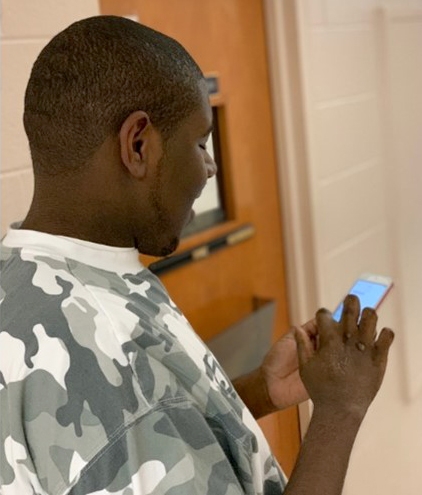All individuals deserve to be active members of the community in which they reside. However, independent societal participation for young people with disabilities, particularly those with autism spectrum disorder (ASD) who also have a secondary disability diagnosis (e.g., intellectual disability) and/or greater support needs, remains a challenge (Bassette et al., 2018). According to Collins et al. (1991), one is perceived as “independent” in a community setting when they function with minimal to no support in that environment. Acquiring skills to navigate through the community safely is an important element of independence in adulthood, and this often requires explicit instruction during the transition years for many students with ASD (Horn et al., 2021). To demonstrate, Hoch et al. (2009) and Taylor et al (2004) studied location-based learning for students with ASD and found some degree of assistance to be required for students to communicate their physical location within a community setting. Though participants in both studies acquired target skills, there was some level of dependence on other individuals.
Together with my research team, we explored methods for teaching location-based learning where transition-age students with ASD received technology support as opposed to relying on other adults. That is, our recent study highlights the necessity for teaching students with ASD how to utilize technology while learning to identify and communicate physical, community-based locations independently (Horn et al., 2021). The importance of learning these safety skills, coupled with the paucity of literature on location-based learning, prompted us to experimentally evaluate the effects of an evidence-based practice (EBP), video modeling (VM), on communicating physical location via handheld mobile device. Specifically, we sought to discover if VM was a viable approach for teaching transition-age students with ASD to identify their location on a university campus and use a mobile device to communicate that information to their campus-based teacher. Students viewed the VMs on the same mobile device they used to communicate.

Figure 1: Using a Mobile Device to Communicate Physical Location
Results showed all three transition-age students with ASD were successful in identifying their university-based location and communicating that information accurately via voice calls and text correspondence following the VM intervention. In other words, when the teacher called each student and asked, “Where are you?” students provided a specific location within a university building hallway (e.g., “Room 113”). Similarly, students learned how to respond to a text message from their teacher asking for their location. Finally, students independently initiated text correspondence by communicating their physical location after completing a daily mail delivery routine (please see https://doi.org/10.1177/2165143420953908 for more information). Figure 1 depicts a young adult engaging in a text exchange with his teacher while actively engaged in location-based learning.
In addition to quantitative findings, we wanted to learn how the students perceived the intervention at the conclusion of our study. All three transition-age students viewed the intervention favorably, reporting they “liked” learning how to use a mobile device to call and text. Additionally, students indicated VM helped them learn how to stop and look for a physical identifier (e.g., room number) in the environment and communicate that information accurately using a mobile device. Finally, all students shared that they enjoyed viewing the videos and indicated a preference for using VM for learning purposes in the future.
Community engagement is an important component of post-secondary transition, and safety skills training should be at the forefront of educational practice for students with greater support needs. That is, considering the safety needs of students with disabilities is essential to adequately prepare them for post-school success (Horn et al., 2021). Our research (i.e., Horn et al., 2021) contributes to the extant literature on location-based learning by utilizing technology to increase independence in transition-age students with ASD. Our findings support the use of VM, an instructional practice with a strong empirical base specific to teaching students with ASD. We encourage practitioners, parents, and caregivers of transition-age youth with ASD to consider VM when teaching new skills. Further, and perhaps the most important takeaway, is the recommendation to utilize technology to increase integrated community independence. The latter is significant as it [technology] can provide support to individuals in a natural, age-appropriate manner while simultaneously increasing independence (Horn et al., 2021).
Annemarie L. Horn, PhD, is an Assistant Professor in the Department of Communication Disorders and Special Education at Old Dominion University in Norfolk, Virginia. She is also the Program Coordinator of the Special Education Adapted Curriculum (K-12) Program. Dr. Horn’s research focuses on enabling technologies to improve educational practice and post-school independence for students with autism spectrum disorder and intellectual disability. Dr. Horn was selected as the 2022 Council for Exceptional Children Division on Autism and Developmental Disabilities (DADD) Tom E. C. Smith Early Career Award recipient for her nationally recognized contributions to teacher education. Please feel free to contact Dr. Horn at ahorn@odu.edu.
References
Bassette, L. A., Taber-Doughty, T., Gama, R. I., Alberto, P., Yakubova, G., & Cihak, D. (2018). The use of cell phones to address safety skills for students with a moderate ID in community-based settings. Focus on Autism and Other Developmental Disabilities, 33(2), 100-110. https://doi.org/10.1177/1088357616667590
Collins, B. C., Wolery, M., & Gast, D. L. (1991). A survey of safety concerns for students with special needs. Education and Training in Mental Retardation, 26(3), 305-318. https://doi.org/10.1177/001440299305900403
Hoch, H., Taylor, B. A., & Rodriguez, A. (2009). Teaching teenagers with autism to answer cell phones to seek assistance when lost. Behavior Analysis in Practice, 2, 14-20. https://doi.org/10.1007/BF03391733
Horn, A. L., Layden, S. J., & Bobzien, J. L. (2021). Where are you? Young adults with autism calling and texting location following video modeling instruction. Career Development and Transition for Exceptional Individuals, 44(1), 17-27. https://doi.org/10.1177/2165143420963908





